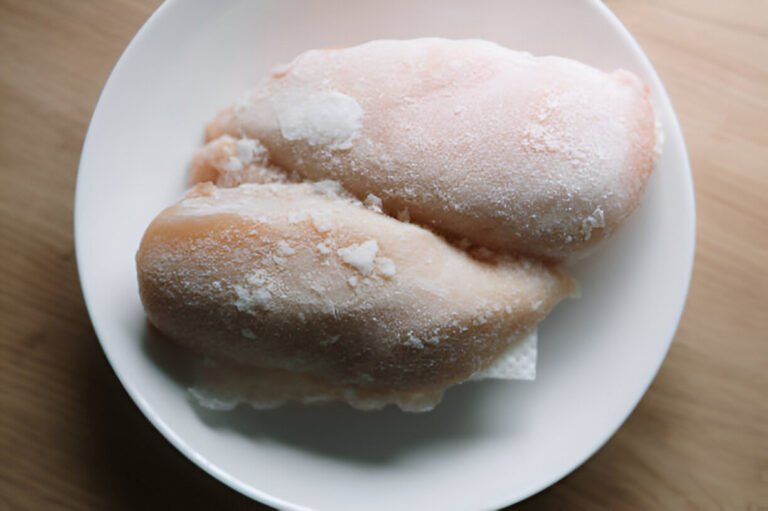Parchment Paper Sales Trends: Analyzing the Numbers Over the Last Decade
When I began baking seriously, parchment paper became my secret weapon. It stopped my cookies from sticking and kept my countertops clean. But it’s not just home bakers like me who have a deep appreciation for this kitchen staple.
In the past ten years, sales of parchment paper have grown a lot. This increase comes from both businesses and home users. Let’s look at the numbers and see the trends shaping this simple kitchen item.
The Rise of Parchment Paper: A Decade in Review
Meal prepping is now a popular choice for busy people. It helps them save time and eat better. Preparing meals in advance helps people control portions, cut down on food waste, and meet dietary goals.
This practice is popular with fitness fans, busy workers, and families. They want quick home-cooked meals without the daily stress of cooking from scratch.
The growing interest in meal prepping has also led to a rise in parchment paper sales. Recent studies show that demand for parchment paper has grown. Home cooks and food service providers are buying much more of it now. This trend highlights the importance of convenient, non-stick cooking solutions in modern kitchens.
| Year | Parchment Paper Sales Increase (%) |
| 2018 | 10% |
| 2020 | 18% |
| 2023 | 25% |
Parchment paper plays a crucial role in meal prepping. It prevents sticking, makes cleanup easier, and helps with portioning meals. Parchment paper is a handy tool. You can use it for baking proteins, roasting veggies, or wrapping meals for the freezer. It makes food prep easier.
Looking back at the past ten years, the sales of parchment paper have shown a steady increase. According to market research, the global parchment paper market was valued at approximately $750 million in 2013. By 2023, it surged past the $1 billion mark, reflecting a compound annual growth rate (CAGR) of around 3.5%.
Factors Fueling the Growth of Parchment Paper Sales

Several factors have contributed to this growth:
- Increased Home Baking: The surge in home baking, especially during the COVID-19 pandemic, significantly boosted parchment paper sales. With more people experimenting in their kitchens, the need for non-stick, easy-to-clean solutions skyrocketed.
- Health and Environmental Awareness: The shift towards healthier cooking methods has played a role. Consumers prefer parchment paper for its ability to reduce the need for greasing pans, cutting down on added fats and oils.
- Rise of the Food Service Industry: The booming food service industry, including bakeries, cafes, and restaurants, continuously demands high quantities of parchment paper for consistent cooking and presentation standards.
Global Trends in Parchment Paper Sales
While the growth trend is global, certain regions have shown particularly robust increases:
| Region | CAGR (2013-2023) |
| North America | 4.0% |
| Europe | 3.2% |
| Asia-Pacific | 3.8% |
| Latin America | 3.1% |
| Middle East & Africa | 2.9% |
North America leads the charge, thanks to its strong baking culture and high disposable incomes. Europe follows closely, with countries like Germany and France showing high per capita usage.
Seasonal Trends in Parchment Paper Sales
Parchment paper sales fluctuate throughout the year, driven by seasonal cooking habits and major holidays. Demand is lower in warmer months. People cook less indoors then. In colder months, demand spikes. More households bake and roast foods.
Certain seasons and holidays significantly impact parchment paper purchases. Winter holidays like Christmas and Thanksgiving lead to a surge in baking, with home cooks preparing cookies, pies, and roasted meats. Summer grilling season boosts sales. Parchment paper is popular for wrapping fish, vegetables, and delicate foods before grilling.
| Season | Common Uses for Parchment Paper |
| Winter | Holiday baking, roasting meats |
| Spring | Lighter baking, meal prepping |
| Summer | Grilling, wrapping delicate foods |
| Fall | Baking pies, roasting vegetables |
Retailers change their inventory to meet demands. They often provide holiday promotions and bulk discounts. Understanding these seasonal trends helps manufacturers and consumers plan their purchases wisely.
The Impact of E-commerce
E-commerce has made it easy for consumers to find specialty baking supplies. This includes parchment paper. Online platforms now offer many types and brands. They meet specific needs, like pre-cut sheets and eco-friendly choices. This convenience has undoubtedly driven up sales.
| Check out: Can You Wrap Brisket in Parchment Paper? |
Innovations in Parchment Paper
Over the last decade, manufacturers have introduced innovations to meet evolving consumer demands. For instance, we now see pre-cut sheets that fit standard baking pans perfectly, and reusable parchment sheets that appeal to environmentally conscious users. Also, silicone-coated parchment is more non-stick. This means you need less cooking spray or oil.
A Look at Consumer Preferences
To understand how consumer preferences have shaped the market, consider the following table, which outlines the key features that have become increasingly popular:
| Feature | Consumer Preference (%) |
| Pre-cut sheets | 35% |
| Silicone coating | 30% |
| Unbleached/eco-friendly | 25% |
| Reusability | 10% |
Consumers now prefer convenience and sustainability. Many are ready to pay more for products that make cooking easier and match their values.
Future Parchment Paper Trend Projections
Looking ahead, the parchment paper market is expected to maintain its upward trajectory. Analysts expect a CAGR of about 4% from 2023 to 2033. This growth comes from trends in home baking, health-focused cooking, and the growing food service sector. Innovations in product offerings and sustainable practices will likely play a significant role in future growth.
Challenges Ahead
However, the industry faces challenges, such as:
- Environmental Concerns: While unbleached and reusable options are gaining traction, the broader industry still grapples with sustainability issues related to paper production.
- Market Saturation: In mature markets like North America and Europe, growth may plateau as the market reaches saturation. Companies will need to innovate continually to maintain interest.
Eco-Friendly Alternatives
More consumers care about their environmental impact. This change is driving a move towards sustainable kitchen products. Many households and businesses now prefer eco-friendly parchment paper options, from biodegradable packaging to compostable parchment paper. This change shows a rising need for products that cut down on waste. At the same time, they keep cooking and baking easy.
The rise in eco-friendly parchment paper sales highlights this trend. Brands now provide unbleached, compostable, and chlorine-free parchment paper. This option attracts eco-conscious consumers. Sales data suggest that sustainable parchment paper products have seen a steady increase, especially among health-conscious and zero-waste households.
| Year | Eco-Friendly Parchment Paper Sales Increase (%) |
| 2019 | 12% |
| 2021 | 20% |
| 2023 | 30% |
Switching to eco-friendly parchment paper helps reduce landfill waste, lower carbon footprints, and support sustainability. By choosing greener options, consumers can enjoy the benefits of non-stick, easy-to-use parchment paper while making an environmentally responsible choice.
Conclusion
Parchment paper’s journey over the last decade is a testament to its indispensable role in modern kitchens. From casual home cooks to professional chefs, its utility is undeniable. Moving forward, it’s vital for manufacturers and retailers to watch changing consumer preferences and sustainability trends. Parchment paper is key in kitchens everywhere. It helps me perfect my chocolate chip cookies and supports chefs in busy restaurants.

Kathy is a restaurateur, artist, and blogger. After spending more than 10 years in the restaurant industry, she has decided to go digital and share her expertise and experience online.







